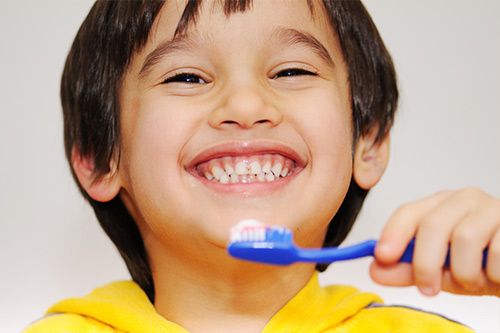Understanding Early Checkups

What will I learn at an early check-up?
In general, an examination would reveal if your child has an existing orthodontic problem, or if one is developing. You could also learn that no problems are present at this time.
How much does a check-up cost?
Most AAO orthodontists offer examinations at no (or low) cost, and at no obligation.
Will my child need early treatment?
Only a few orthodontic problems need correction while a child has baby teeth. In the event that a problem is detected, chances are your orthodontist will take a “wait-and-see” approach, and will check your child’s growth and development periodically. When the time is right for your child, orthodontic treatment can begin.
Are braces used in early treatment?
When a child has early treatment (while most baby teeth are present), the type of treatment varies based on the kind of problem a child needs corrected. The goal of early treatment is to create a better environment for permanent teeth as they come in. Not all orthodontic treatment is accomplished with braces. For some patients, early treatment could consist of removal of a stubborn baby tooth, so that the succeeding permanent tooth can arrive in its proper place. Some patients may need help with how to position their tongue when they swallow, while others may need intervention to stop a thumb- or finger-sucking habit. These are sometimes treated with habit appliances. If a child’s upper jaw is too narrow, so that the permanent teeth do not have room to come in, treatment could consist of a palate expander to widen the jaw. Braces are often recommended to optimize tooth and jaw alignment after most or all of the permanent teeth are in. Dr Palmer makes use of the full range of orthodontic appliances and will recommend the type of treatment he/she believes is best suited to your child and correcting his/her orthodontic problem
If treatment is done while my child has some baby teeth, does that mean s/he is done with treatment?
Not necessarily. Sometimes preventive or interceptive orthodontic treatment is all that a patient needs. More often, though, patients will require a second phase of comprehensive orthodontic treatment after a child has most or all of their permanent teeth. This completes the tooth and jaw alignment that was started with a first phase of preventive or interceptive treatment.
Why move baby teeth?
The purpose of early treatment is not moving baby teeth to improve their appearance. Rather, early treatment is done to create a healthy environment for permanent teeth that will be coming in. While baby teeth may be repositioned in preventive or interceptive orthodontic treatment, their movement is incidental. Baby teeth are there to hold space for permanent teeth, to help with facial development, to make it possible to bite and chew, and for clear speech.
